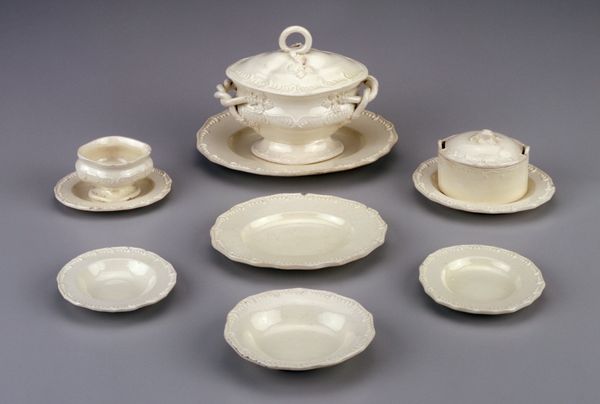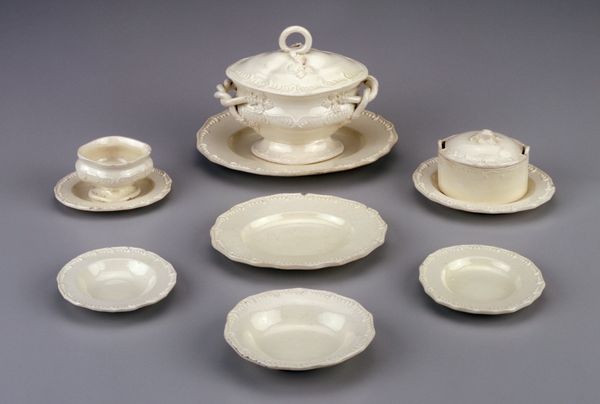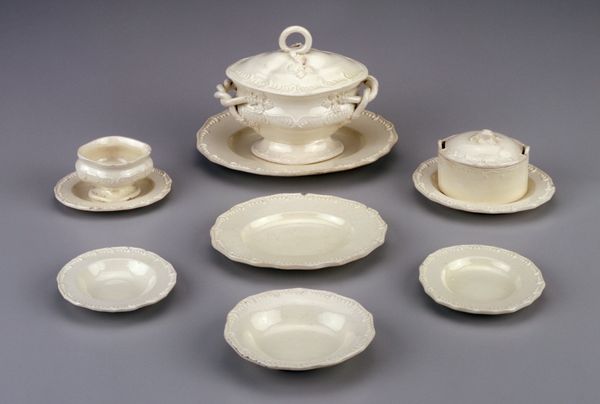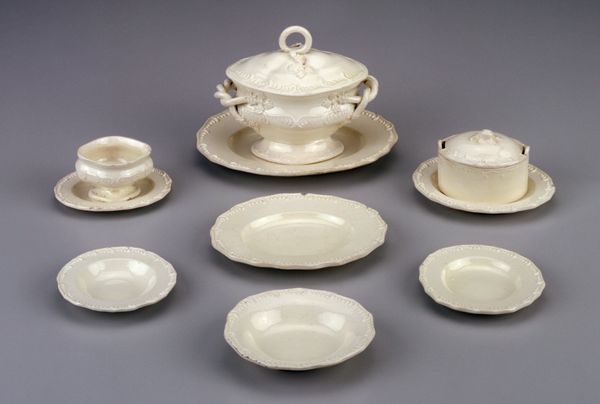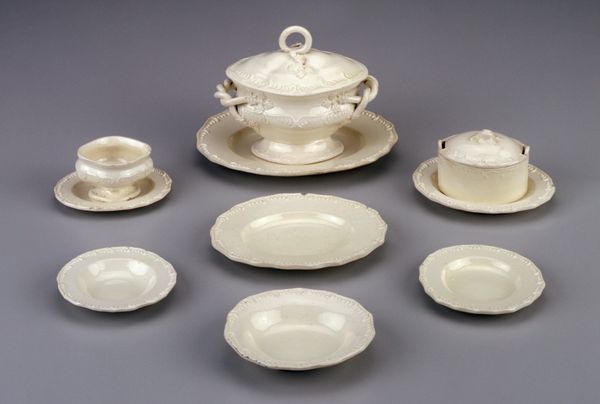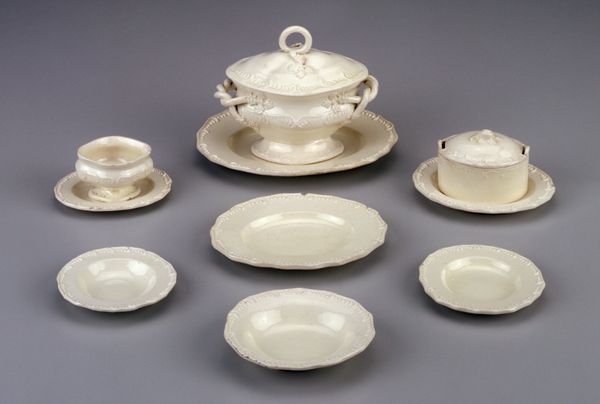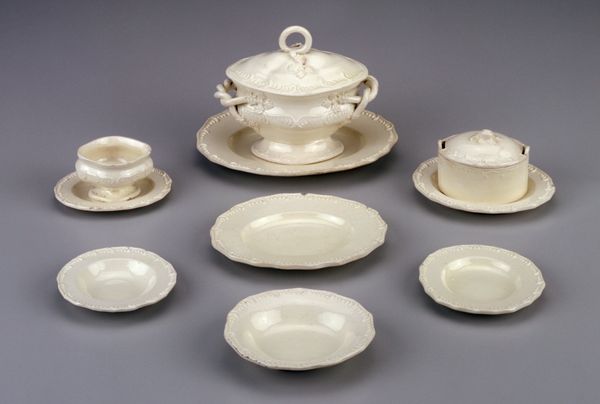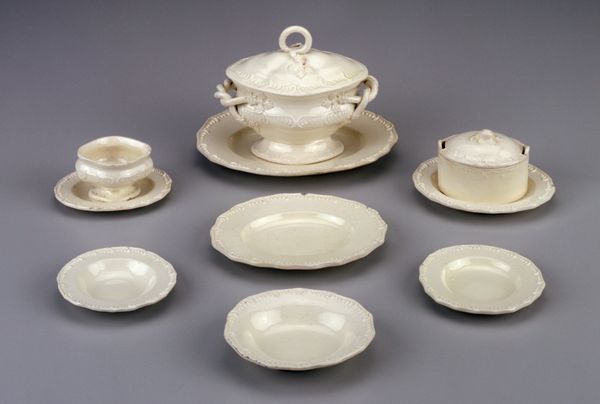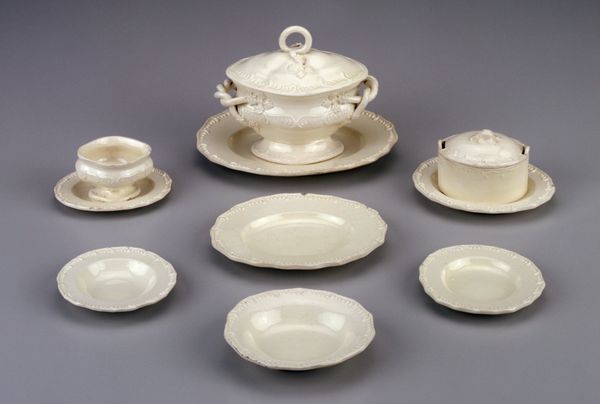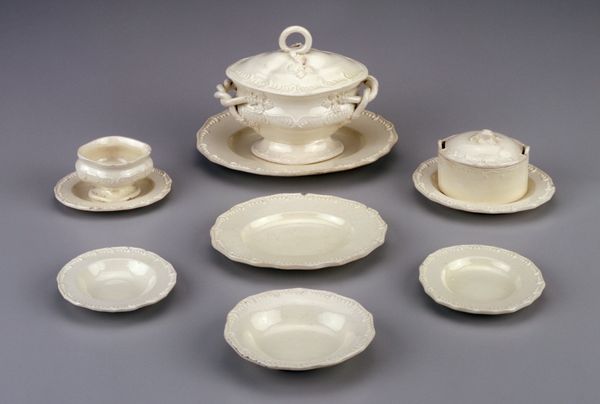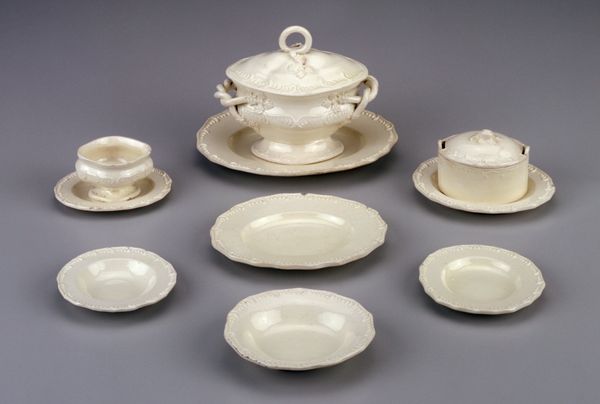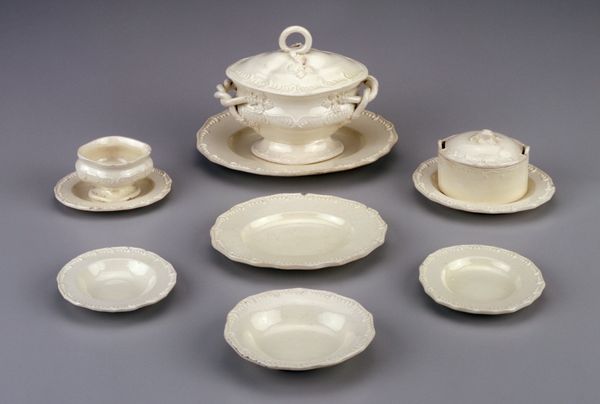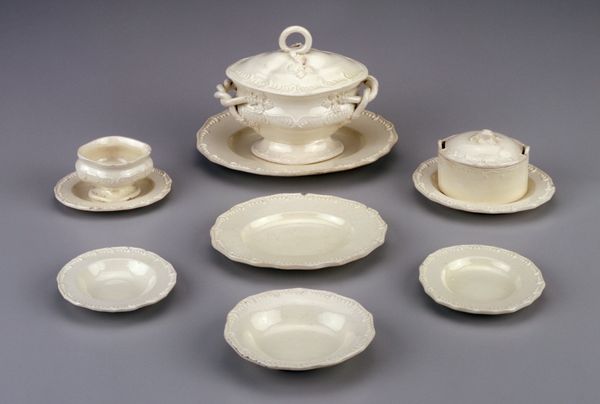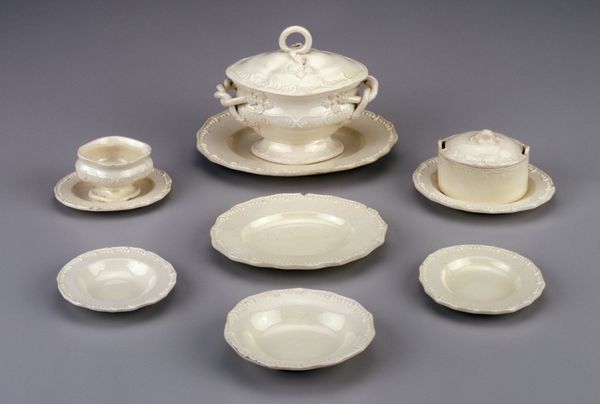
Dimensions: 3/8 x 2 11/16 in. (1 x 6.83 cm)
Copyright: Public Domain
Curator: This beautiful "Plate," created around 1775 by an anonymous English artist, showcases the delicate Rococo style favored at the time, crafted from creamware earthenware. Editor: Immediately striking, isn't it? There's this hushed, almost monastic feel to the composition. The creamware absorbs the light, muting any harsh shadows and reinforcing a sense of understated elegance. Curator: Absolutely. Creamware’s popularity in the 18th century stemmed from its affordability compared to porcelain, opening up the decorative arts to a wider consumer base. We might think about the ways that shift disrupted previous consumption patterns in Europe. Editor: Yes, and within that context, look closely at the relief ornamentation – the tiny beads and scallop shells. There's a formal rigor underpinning that Rococo flamboyance, a deliberate order imposed onto what might otherwise spill into excessive ornamentation. Curator: And don’t forget the implications of owning such dinnerware in that time. It reflected aspirations of upward mobility as well as social identity. A creamware set would allow those aspiring to the gentry to mimic their habits—participating, or rather simulating, an elite culture. Editor: But observe also the shapes themselves. They possess such pristine geometry—the circle repeated and elaborated, a pure exercise in form. It echoes discussions of perfect forms that run through Neoplatonism, or the philosophical tradition's embrace of idealism, perhaps even reflecting an attempt to create "perfect form." Curator: Fascinating how even in the seemingly mundane object, you find such lofty ideals at play! And that highlights something important: ordinary objects contain a nexus of meanings—social, political, philosophical. Editor: Indeed, and it proves once again how form can truly carry as much, if not more, significance than the historical weight that’s brought to bear upon it. Curator: Though those two perspectives don't necessarily contradict one another; rather, they layer, creating richer meaning together. Editor: A bit like the scalloped layering on the objects before us! Curator: Precisely.
Comments
No comments
Be the first to comment and join the conversation on the ultimate creative platform.
